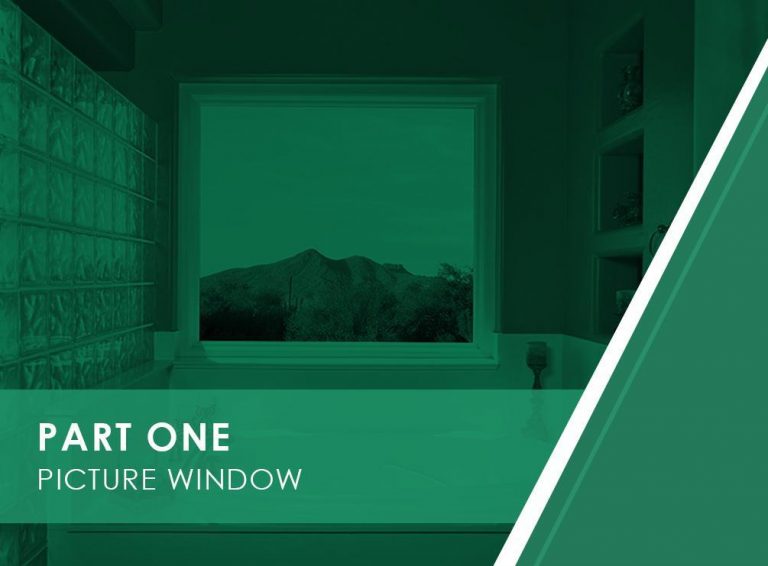MENU


If there’s one flaw about homes built in the last century is that they were usually built near stunningly marvelous landscapes, but the homes had small windows. As such, one simply couldn’t fully appreciate the beauty of the surroundings while inside the home.
Contemporary homes built in an equally stunning landscape can correct this small oversight by using large-frame picture windows. This type of window works precisely the way you would suppose: they act like a picture frame of the surrounding outdoor area.
When two or more large picture windows are seated right beside each other, they can fill up an entire wall of a modest-sized home. They’re perfect for anyone who enjoys the beauty of nature and prefers a feeling of openness.
Unfortunately, picture windows do have a few downsides as well. For one, these windows are not designed to open. Therefore, they’ll only able to let natural light through, but not help in the home’s ventilation.
Fortunately, homeowners that are planning to use picture windows as replacement windows can improve on their home’s architectural design in order to minimize or even negate the disadvantages of picture windows. Security measures can be included to prevent damage to the window during a storm.. And lastly, low-emissivity (low-e) glass can be used to make the window more energy-efficient.
Moreover, picture windows are also customizable.
Sliding windows have been around for quite some time, and they’ve been highly popular for use in contemporary home designs. These types of windows are perfect for homes of all sizes. So, whether the home is small, medium or a mansion, a sliding replacement window can definitely enhance its appeal when installed and positioned carefully and wisely. Below are some advantages and disadvantages of this type of window in a contemporary home architectural design.
The typical design of a sliding window is to use thinner frames and large glass panels. This means that the window can act somewhat like a picture window, but with the added ability of letting air through and not just natural light.
Modern-day sliding windows use energy-efficient low-emissivity (low-e) glass and highly insulative framing. Therefore, even though the window does have a large glass panel and lets plenty of sunlight through, heat is prevented from passing in or out the glass and frame. Because of this, the home requires less energy to cool during the summer and to keep warm in the winter.
One of the best advantages of a sliding window is that it is extremely easy to operate. Simply undo the latch, and slide the window sideways to open it. You can slide it as wide or as narrow as you need. Additionally, sliding windows made by the top window manufacturers are manufactured with highly durable slider mechanisms, so maintaining them will not be difficult at all.
Sliding windows have a great design, but unfortunately, the design also makes it difficult to clean the outer portion of the window from inside the home. The only way to ensure that the entire outer portion is well cleaned would be to step outside the home. This is especially problematic when this type of window is installed on higher floors of the home.
Not all sliding windows are equal and energy-efficient, so you’ll need to make sure that the ones you purchase have an energy efficiency label from National Fenestration Rating Council (NFRC).
One of the most notable characteristics of contemporary architectural design is that it usually follows the whims of the designer. As such, contemporary homes don’t actually have a fixed design. In fact, many contemporary homes have such unique designs that traditional windows and other fixtures may look somewhat out of place.
In such cases, uniquely designed contemporary homes would require specialty or custom-designed windows to bring out their beauty. As the name suggests, specialty windows are windows that are typically custom-made according to the design you require. These windows may have a traditional base design, such as a picture or sliding window, but with a twist. For instance, a picture window, though traditionally rectangular in shape, may take on other forms, such as circular or triangular.
In addition to a custom shape or form of the window, the components used in creating the windows can also be customized. In fact, some of the top window manufacturers today can provide window designers with a wide range of choices in terms of hardware, color and finishes, among other elements.
Specialty or custom-designed windows are also popular in contemporary homes that require refurbishment. If the original window of the home was customized, manufacturers are capable of creating an exact duplicate of the original window design or something that would be highly similar.
The primary advantage of a specialty window is that the designer has a lot of leeway when it comes to the durability of the final product. The durability of the window relies heavily on the material, design and quality of manufacturing. By choosing one of the top manufacturers to produce the specialty window, you can rest assured that the windows are manufactured under the highest-quality manufacturing process, making the end-product durable and beautiful.
Whether you choose picture, sliding or specialty windows for your contemporary home, you should make it a point to work with a certified and experienced window contractor, and get your products from a reputable manufacturer.